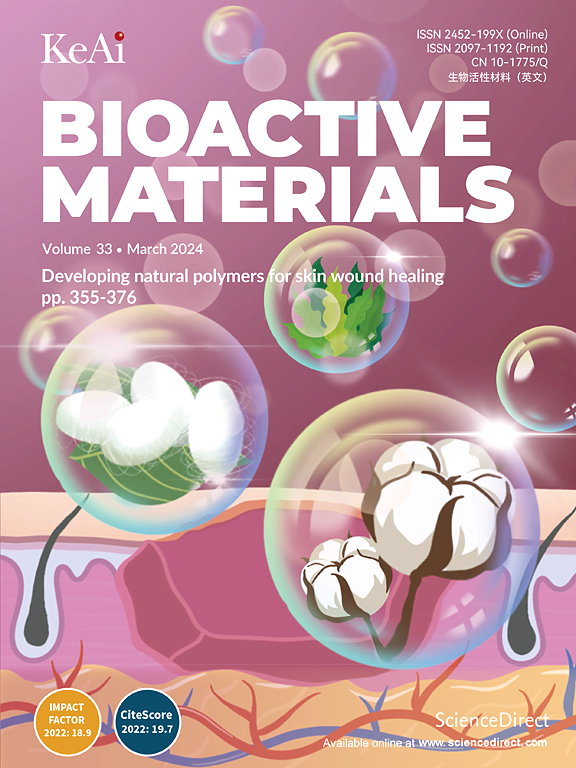Mitochondrial uptake and translocation by macrophages promotes vascular regeneration in peripheral ischemia
IF 18
1区 医学
Q1 ENGINEERING, BIOMEDICAL
引用次数: 0
Abstract
Mitochondrial transplantation promotes cardiac repair following injury; however, its effects on limb ischemia due to peripheral artery disease (PAD) remain unclear. In this study, transplantation with mitochondria isolated from both murine muscle tissue and human arterial blood significantly promotes revascularization and blood flow recovery in a hindlimb ischemia mouse model. Our findings further show that transplanted mitochondria promote macrophages infiltrating into ischemic regions. Additionally, internalization of the mitochondria promotes macrophage M2-like polarization, resulting in increased pro-angiogenic factors expression and secretion and subsequent endothelial cell and smooth muscle cell proliferation. In conclusion, mitochondrial transplantation shows considerable potential in improving peripheral ischemia and provides therapeutic options for patients with PAD.

巨噬细胞的线粒体摄取和移位促进外周缺血血管再生
线粒体移植促进心脏损伤后修复;然而,其对外周动脉疾病(PAD)所致肢体缺血的影响尚不清楚。在本研究中,从小鼠肌肉组织和人动脉血中分离线粒体移植可显著促进小鼠后肢缺血模型的血运重建和血流恢复。我们的研究结果进一步表明,移植线粒体促进巨噬细胞向缺血区域浸润。此外,线粒体内化促进巨噬细胞m2样极化,导致促血管生成因子表达和分泌增加,内皮细胞和平滑肌细胞增殖。总之,线粒体移植在改善外周缺血方面显示出相当大的潜力,并为PAD患者提供了治疗选择。
本文章由计算机程序翻译,如有差异,请以英文原文为准。
求助全文
约1分钟内获得全文
求助全文
来源期刊

Bioactive Materials
Biochemistry, Genetics and Molecular Biology-Biotechnology
CiteScore
28.00
自引率
6.30%
发文量
436
审稿时长
20 days
期刊介绍:
Bioactive Materials is a peer-reviewed research publication that focuses on advancements in bioactive materials. The journal accepts research papers, reviews, and rapid communications in the field of next-generation biomaterials that interact with cells, tissues, and organs in various living organisms.
The primary goal of Bioactive Materials is to promote the science and engineering of biomaterials that exhibit adaptiveness to the biological environment. These materials are specifically designed to stimulate or direct appropriate cell and tissue responses or regulate interactions with microorganisms.
The journal covers a wide range of bioactive materials, including those that are engineered or designed in terms of their physical form (e.g. particulate, fiber), topology (e.g. porosity, surface roughness), or dimensions (ranging from macro to nano-scales). Contributions are sought from the following categories of bioactive materials:
Bioactive metals and alloys
Bioactive inorganics: ceramics, glasses, and carbon-based materials
Bioactive polymers and gels
Bioactive materials derived from natural sources
Bioactive composites
These materials find applications in human and veterinary medicine, such as implants, tissue engineering scaffolds, cell/drug/gene carriers, as well as imaging and sensing devices.
 求助内容:
求助内容: 应助结果提醒方式:
应助结果提醒方式:


